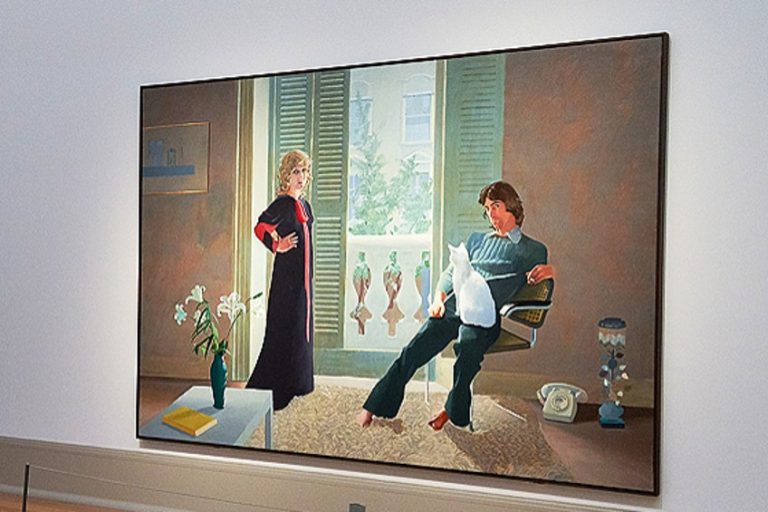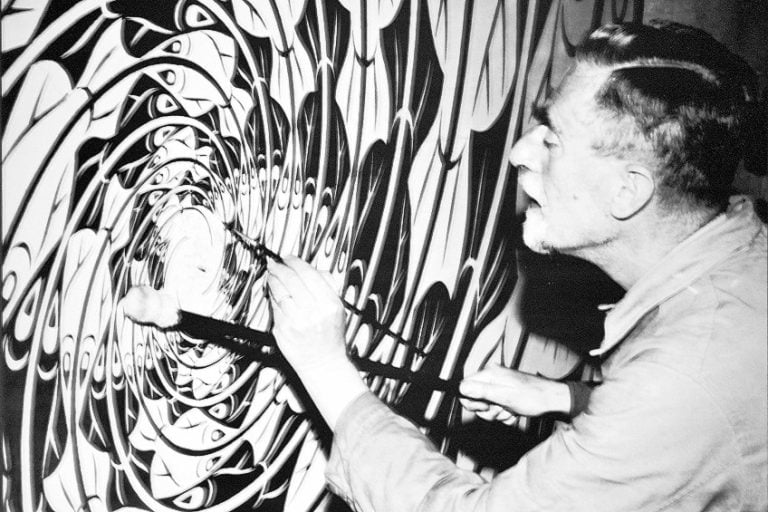Van Gogh Art Style – A Look at His Artistic Expressions
What was Van Gogh’s style, and what was unique about Van Gogh’s painting technique? The distinct feeling of urgency in Vincent van Gogh’s art style distinguished his works of art from those of other artists. Van Gogh’s style of painting was renowned for its bold and dramatic brushstrokes, which were said to create a feeling of movement. To learn more about Vincent van Gogh’s art style, read further below!
Table of Contents
- 1 The Significance of Vincent van Gogh’s Art Style
- 2 The History of Vincent van Gogh’s Style of Painting
- 3 Gaining a Better Understanding of Van Gogh’s Painting Technique
- 4 The Influences That Shaped Van Gogh’s Art Style
- 5 Key Subjects and Themes
- 6 The Legacy of Vincent van Gogh
- 7 Frequently Asked Questions
The Significance of Vincent van Gogh’s Art Style
Vincent van Gogh is famous for experimenting with materials and techniques when making his paintings. He used pigments in his paintings which had just recently surfaced in the art market, during a time when his artistic career was growing and starting to gain momentum.
Van Gogh strove for a sense of luminosity in his paintings. He used the newly released pigments to do just this. Yet, due to the lack of stability in the chemicals used, the pigments regularly fade over time.
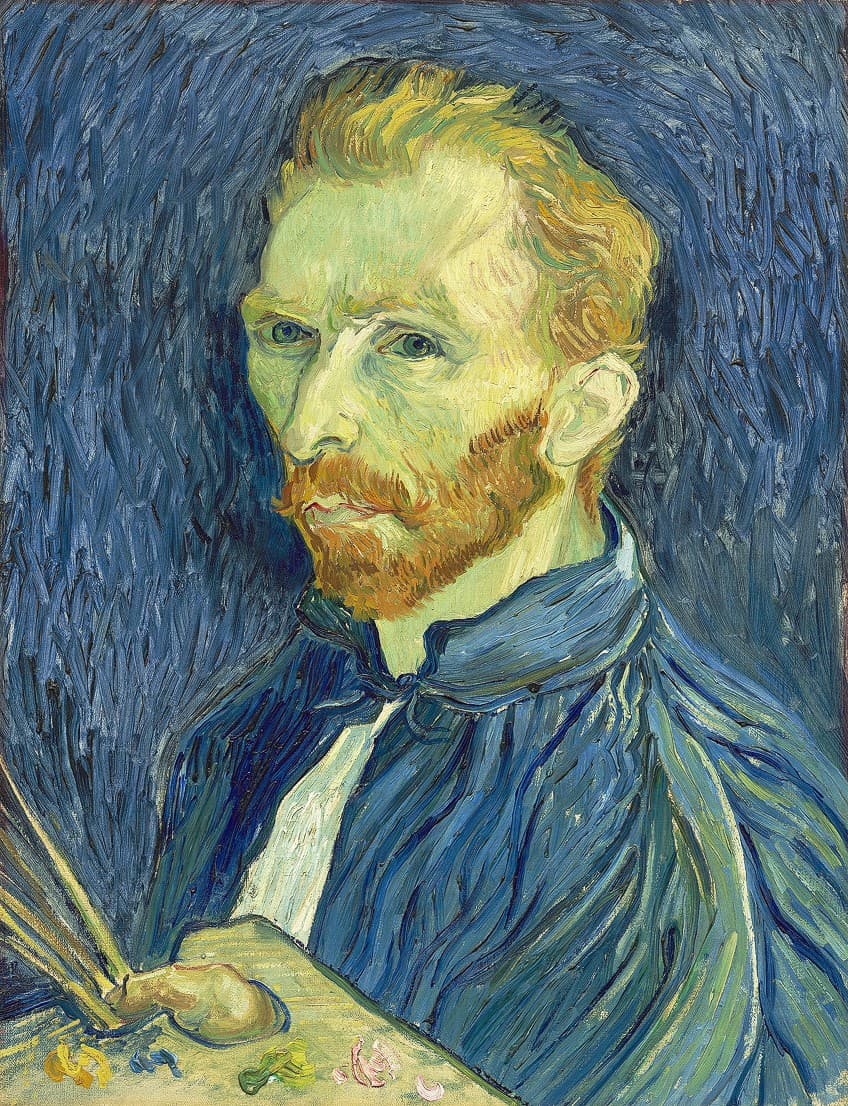
He was well aware of the pigment’s flaws and took extra precautions by using greater amounts and brighter colors than he anticipated for the end result. This method was used to get the impression Van Gogh desired when the painting’s colors eventually faded. His unique approach would prove to be very influential on not only the artists of his own time but for many years after.
The History of Vincent van Gogh’s Style of Painting
It is said that Van Gogh regularly used paint directly from the tube and that in the 70 days preceding his passing, he produced an average of one work of art every day. However, that was at the end of his lifetime. Let us start right at the beginning of his artistic journey and progress through his development from there.
The Early Years
Van Gogh began his career as a self-taught artist, copying various prints and studying 19th-century drawing books. His approach evolved from the belief that in order for one to be a great artist, one must first master sketching. Van Gogh believed that mastering black and white before experimenting with color was crucial, therefore he concentrated on learning the fundamentals of figure drawing and illustrating landscapes in precise perspective. Only when he was pleased with his sketching skill did he begin adding colors, and his vibrant color palette developed into one of his later work’s most recognizable qualities.
Van Gogh made over 1,000 sketches in total and saw sketching as an essential aspect that allowed him to develop creatively and explore form and movement.
Van Gogh’s sketches are notable because his depictions of individuals, light, and the environment can be appreciated without the use of color. The artist drew with black chalk, pencil, blue chalk, red chalk, reed pen, and charcoal, though he regularly blended materials. He sketched on many types of paper and with whatever materials were accessible to him.
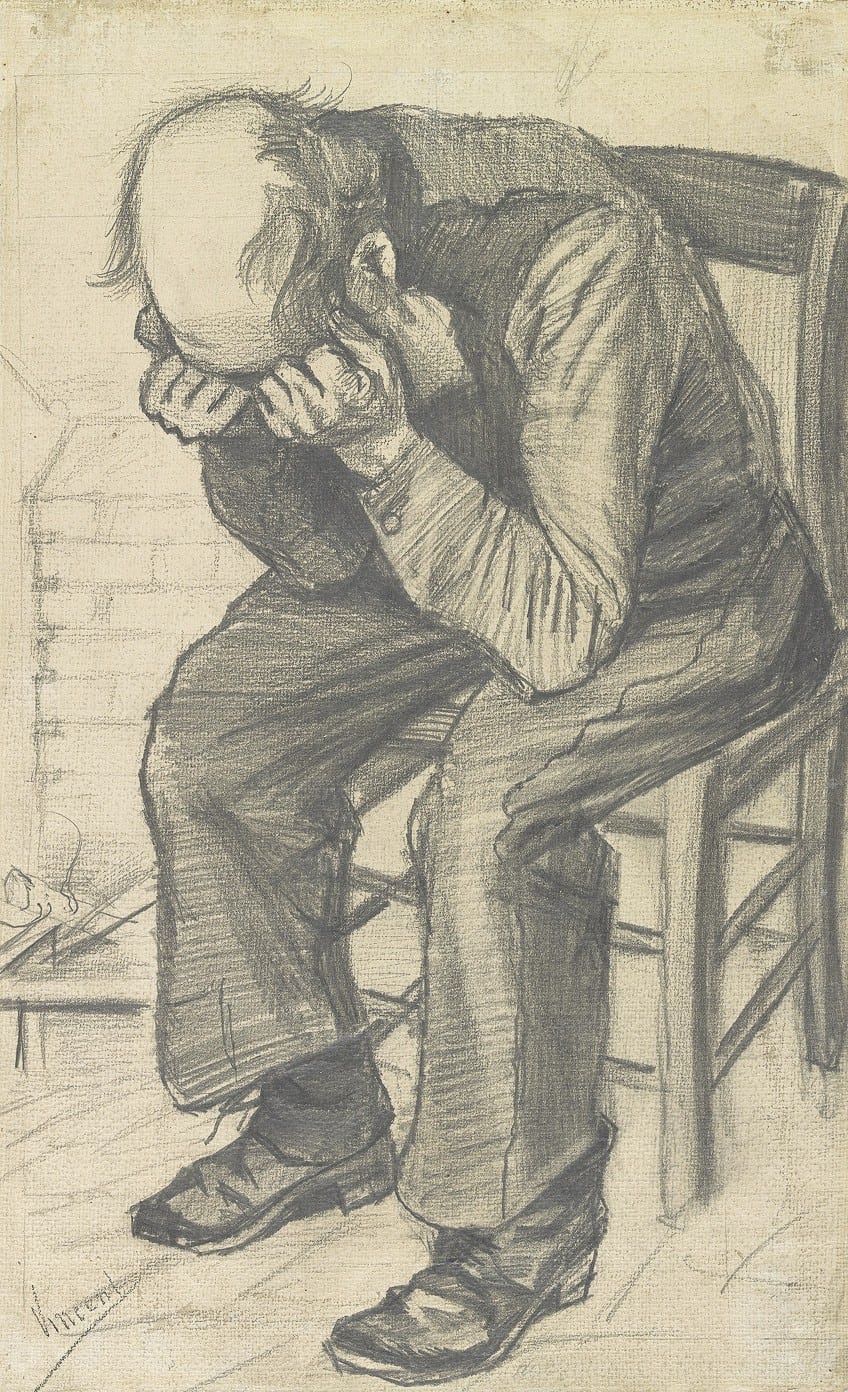
Drawing enabled Van Gogh to convey light and imagery more rapidly than painting, and he would regularly sketch out his concept for a painting before beginning the painting itself. During his career, Van Gogh painted almost 150 watercolors in addition to sketching.
Although they lack his signature brush stroke textures, the watercolors are easily identified as the works of Van Gogh due to their rich, brilliant colors.
Van Gogh first employed watercolors to add shading to his paintings, but he found that the more he painted with them, the more these pieces evolved into artworks in their own right. Van Gogh started to experiment with lithography in 1882 and went on to produce a sequence of 10 graphic works – one etching and nine lithographs. The Potato Eaters was designed for the art market, and he created a lithograph of the painting to reach more people and hopefully earn some more money.
The Middle Years
Since his personal letters often include sketches of the works he was currently working on or had just finished, many people consider them to be another aspect of his artwork. These drawings exhibit Van Gogh’s progress and the evolution of his masterpieces. Throughout his early career, Van Gogh used deeper hues that complemented his themes, particularly those of peasant farm workers and miners.
However, after moving to Paris in 1886, his artistic direction drastically changed as a result of being influenced by the Impressionist and Neo-Impressionist movements.
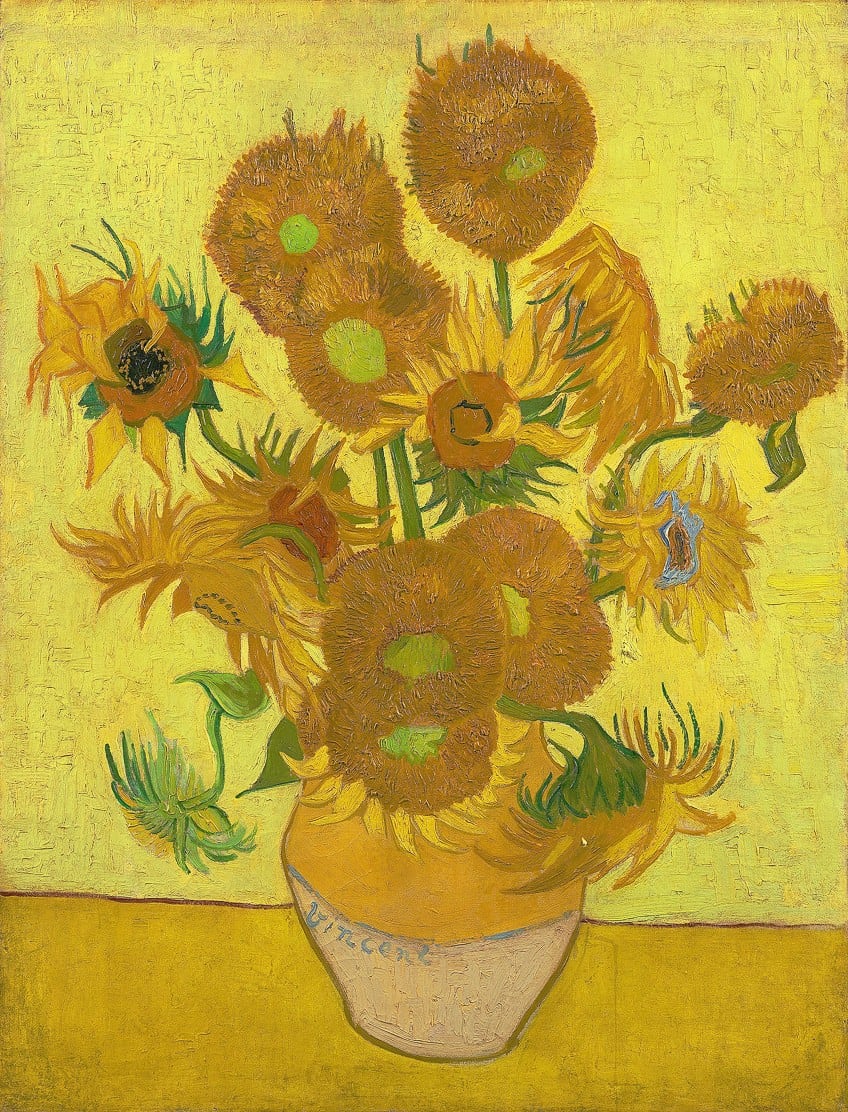
He started with a softer palette of yellows, reds, greens, oranges, and blues and played with the Impressionists’ broken brushstrokes. Van Gogh also tried the Neo-Impressionist pointillist technique, in which the observer optically mixes opposing specks of pure color into the resultant color. Such experimentation may be seen in 1885’s Self-Portrait with a Straw Hat. Van Gogh was also heavily influenced by Japanese prints, and he painted black edges around items, filling them in with dense color patches.
His color palette changed with his emotions, and he sometimes purposefully limited it, like in “Sunflowers”, which is nearly exclusively made of yellows.
Advanced Years
Between 1886 and 1889, Vincent van Gogh created approximately 30 self-portraits, illustrating his continued search for various complementing color contrasts and a stronger composition. His self-portrait collection ranks him among the most prolific self-portraitists of any period in history. Van Gogh utilized portrait painting as a kind of reflection, a means of earning money, and a means of honing his creative talents.
Van Gogh traveled to Arles in 1888 and resided for a period with Gauguin. Gauguin purchased a bale of jute, which both painters utilized on their canvases, leading them to employ thicker paint and harder brush strokes.

During this period, Van Gogh began to copy Gauguin’s approach to painting from memory, which led to his works being aesthetically pleasing and less lifelike. Through his use of color and brush technique, Van Gogh’s evolving style saw him emotionally reacting to themes. Instead of utilizing colors accurately, he purposefully employed them to capture a mood. At the time, no other artist was doing so. Van Gogh completed 14 artworks of orchards in less than four weeks, inspired by the light and brilliant colors of the Provençal spring. He painted outside and changed his approach and technique.
The “Flowering Orchard’s” composition demonstrates the impact of Japanese prints.
Gaining a Better Understanding of Van Gogh’s Painting Technique
Now that we have had a look at how Van Gogh’s art style developed through the ages, we can examine the various aspects of Van Gogh’s painting technique. This will help us gain greater insight into why Van Gogh’s style of painting was so highly-renowned. Let’s begin with his renowned bold brushwork.
Expressive and Bold Brushwork
Vincent van Gogh’s brushwork was regarded as groundbreaking at the time. He utilized his brushes to express himself emotionally instead of using them for accurate portrayals. He used quick, strong brushstrokes to create movement and energy on the canvas.
This approach is visible in works such as one of his most iconic works, “The Starry Night“, in which his renowned swirling brushstrokes evoke a feeling of energy in the night sky.

He is also known for his heavily laid-on paint brushstrokes. This is known as impasto. When an artist applies a thick coat of paint to a canvas, the brushstrokes become more visible, creating a unique texture to the picture. Van Gogh preferred a thick, undiluted flat color applied with a palette knife or brush. He sometimes painted his colored swirls on canvas by spreading the paint with his finger. Van Gogh’s paintings have a nearly three-dimensional quality to them.
Vibrant Color Palette
The Impressionist movement and the application of color theory influenced Van Gogh significantly. He used a complimentary color palette, combining contrasting colors to achieve both visual harmony as well as a sense of excitement. His fascination with Japanese woodblock prints inspired his color choices even more, as he experimented with brilliant, strong colors that conveyed the soul of his themes and landscapes. Van Gogh’s use of strong, pure colors lends his artworks a surreal and dreamlike quality.
His color choices were often dictated by his emotions, with each hue expressing the mood and ambiance he wished to communicate.
Exaggerated and Distorted Forms
Van Gogh’s work was not concerned with reality in the strictest sense. Instead, he applied exaggeration and distortion to communicate his subjects’ psychological and emotional qualities. His paintings’ landscapes and figures may look somewhat twisted or stretched to emphasize their emotional effect.
Van Gogh was able to go beyond the superficial look of things and explore the underlying emotional undercurrents of his themes because of this distortion.
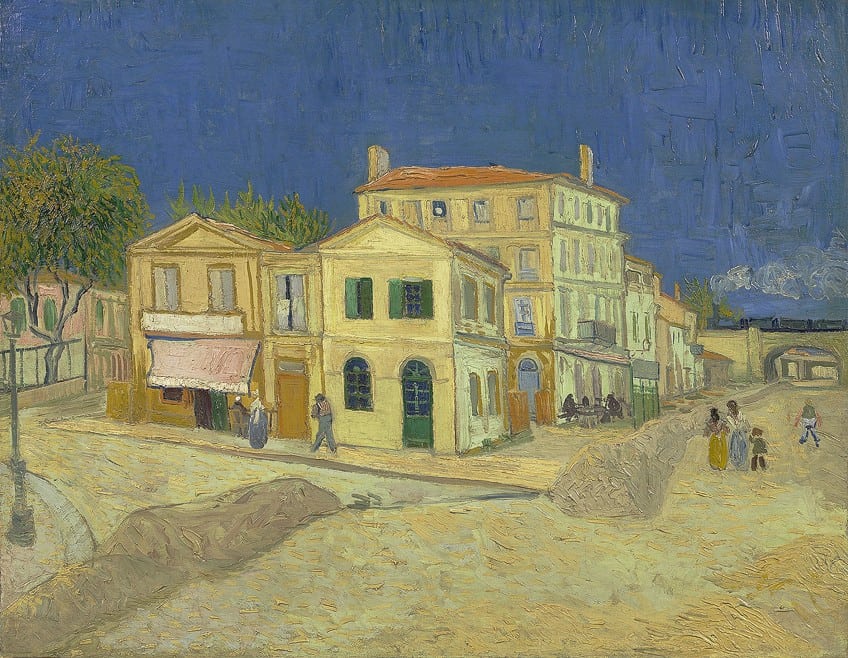
Emphasis on Texture
One of Vincent van Gogh’s distinguishing characteristics is his emphasis on texture. He was determined to express not just the way things looked, but also the tactile aspects of his subjects. He applied and manipulated the paint with a variety of tools, including a palette knife, the handle of his brush, and even his fingers. Through this experimentation, he was able to produce a wide range of textures, from rough and dense to flowing and smooth.
To obtain the correct texture and color intensity, Van Gogh typically used numerous layers of paint. He could produce noticeable and interesting textures just by layering paint in specific areas.
Symbolism
Vincent van Gogh’s symbolism in his paintings is a fascinating part of his work. He was passionate about infusing personal significance and feelings into his paintings, pushing beyond basic representation to portray more complex ideas and concepts. Van Gogh is arguably best known for his sunflower paintings. Sunflowers represented vigor, pleasure, and companionship to him.
Despite his personal battles with mental health, he expressed a feeling of optimism and hope by means of his vivid flower paintings.
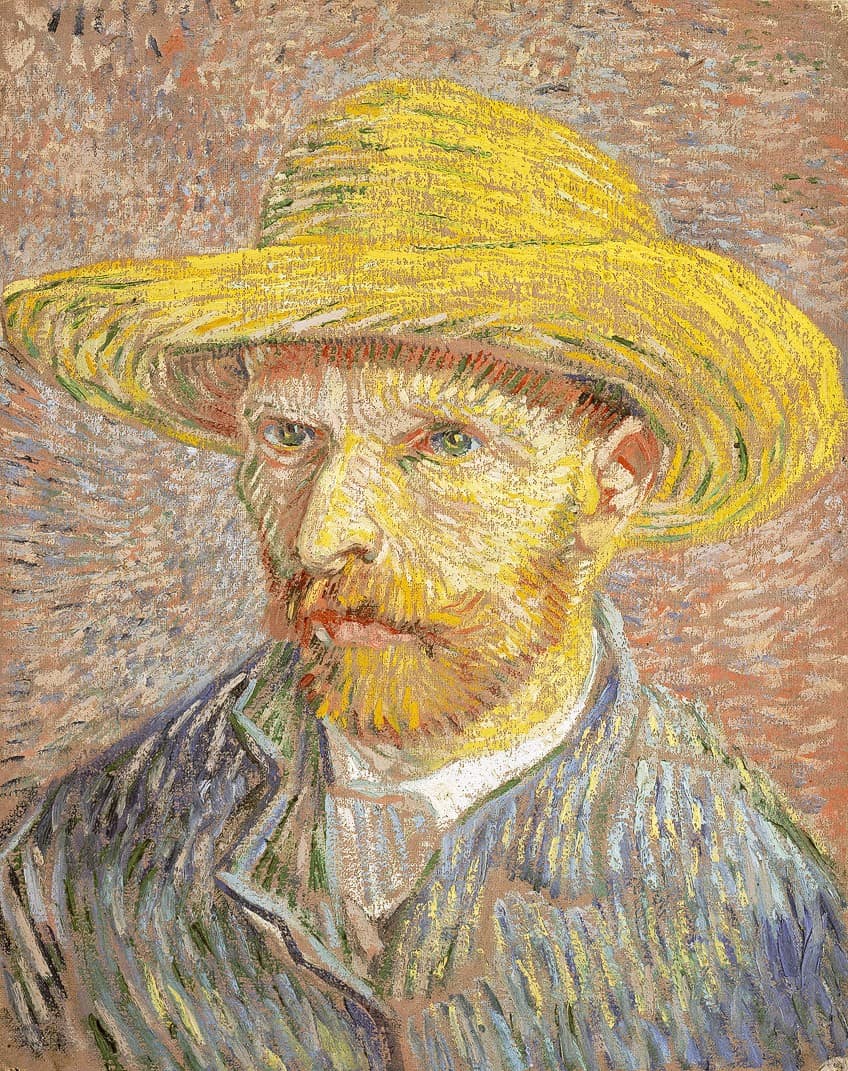
Van Gogh’s self-portraits represented more than mere depictions of himself. They were used by the artist for introspective contemplation and self-expression. He studied his personal emotions, mental illnesses, and self-identity through his self-portraits. Each self-portrait portrays a distinct aspect of his personality and inner life.
The Influences That Shaped Van Gogh’s Art Style
A number of factors inspired Vincent van Gogh’s art style. Impressionism led him to use vibrant hues and influenced his emphasis on nature, while Japanese art largely influenced his design choices and compositions. Yet, it was his own psychological and emotional challenges that molded his artwork, resulting in the powerful and expressive manner for which he is now recognized.
The Influence of Impressionism
The Impressionist movement, which was at its pinnacle during Van Gogh’s early years as an artist, significantly influenced him. Impressionism emphasized the capturing of transitory moments as well as the influence of light on the artwork’s subject matter.
Van Gogh loved paintings by the Impressionists for their use of brilliant colors and emphasis on nature. In his early career, he blended aspects of the Impressionist style into his own work.
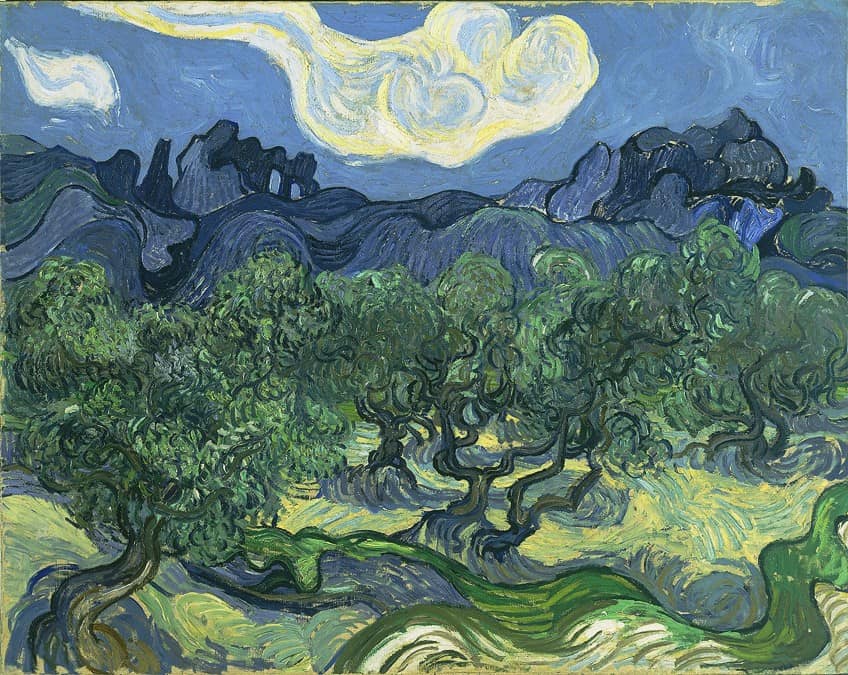
The Impressionists influenced his use of pure colors, as well as his concern in expressing the shifting properties of light. However, as his technique progressed, he drifted away from pure Impressionism and formed his own distinct painting style that is so well-renowned today.
The Influence of Japanese Art
Van Gogh developed a fascination for Japanese art, notably ukiyo-e woodblock prints, in the latter half of his career. The Japanese artist’s use of sharp outlines, asymmetrical compositions, and flattened perspectives, intrigued him. Van Gogh’s exposure to Japanese art influenced his composition and design choices significantly. He started experimenting with unusual compositions, employing strong patterns and lines to produce lively paintings.
His love of Japanese art also influenced his use of bright colors and themes, such as the addition of blooming branches and flowers in several of his works.
Psychological and Emotional Factors
Van Gogh’s artistic approach was inextricably linked to his mental and emotional state. Throughout the course of his life, he battled mental health challenges and used painting as a cathartic outlet, expressing his deepest sentiments and emotions on canvas.
His colors and brushwork reflected his unpredictable emotions.
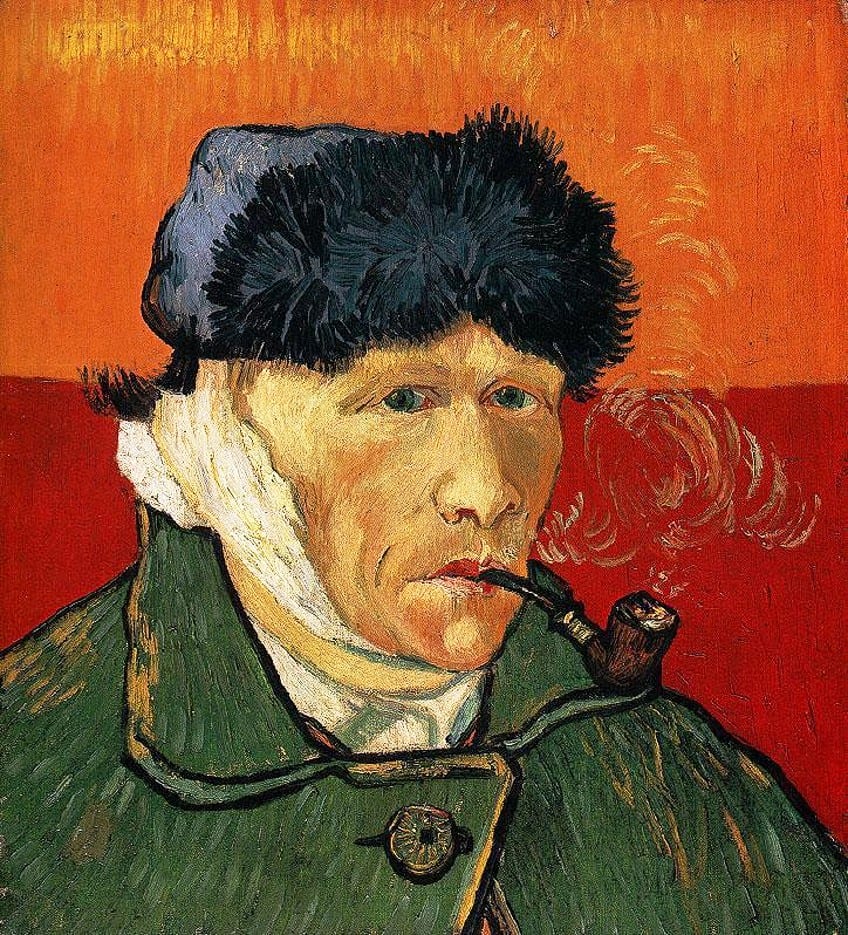
He felt that art ought to express the artist’s emotions, and he used his expressive technique to generate an emotional reaction from the audience. His incorporation of symbolic motifs, such as the cypress tree as a sign of death and the stars as representations of eternity, revealed his aim to transmit deeper meanings and feelings through his works.
Key Subjects and Themes
Vincent van Gogh’s subjects and themes were varied, illustrating his deep connection to the natural environment, introspective examination of the human condition, and emotional and symbolic approach to creating still-life works. His distinct style and vision continue to appeal to audiences all around the world. Let’s examine some of his key subjects and themes in greater detail below.
Natural Landscapes
Nature captivated Van Gogh, and he often portrayed rural settings and the countryside in his works of art. He was attracted to the simplicity of life in remote rural areas. His paintings often depict farms, fields, orchards, and village life, evoking the rural scenes he saw on his travels.
The influences of light and atmosphere on the natural world specifically caught his attention.

In his landscape paintings, he attempted to convey the ever-changing properties of light, depicting various moments of the day, weather conditions, and changing seasons. His application of vivid colors enabled him to communicate the essence of nature in his works, resulting in an overall sense of movement and a certain atmosphere.
Portraiture
Vincent van Gogh’s portraiture, whether of other people or of himself, typically probed into his subjects’ emotional states. His paintings reflected the emotions and feelings that lay under the surface, exposing the true nature and individuality of the people he painted.
He attempted to capture his subjects’ humanity and personality, trying to accurately capture and convey their sorrows as well as their joys.
Van Gogh applied symbolic concepts and compositional choices in his self-portraits to represent his personal feelings and experiences. He described himself as a sensitive artist who struggled with inner challenges and explored his identity through his art. The self-portraits served as a form of self-reflection, depicting his perspective of himself and his mental state at various points in his life.
Still Life Paintings
Van Gogh’s still life paintings were more than simply representations of things; they often had symbolic connotations and deeper meanings. He picked objects and imbued them with personal and emotional meaning.
Sunflowers, for instance, represented vitality and friendship in his still life series, but other things may have references to life, death, or his personal difficulties.
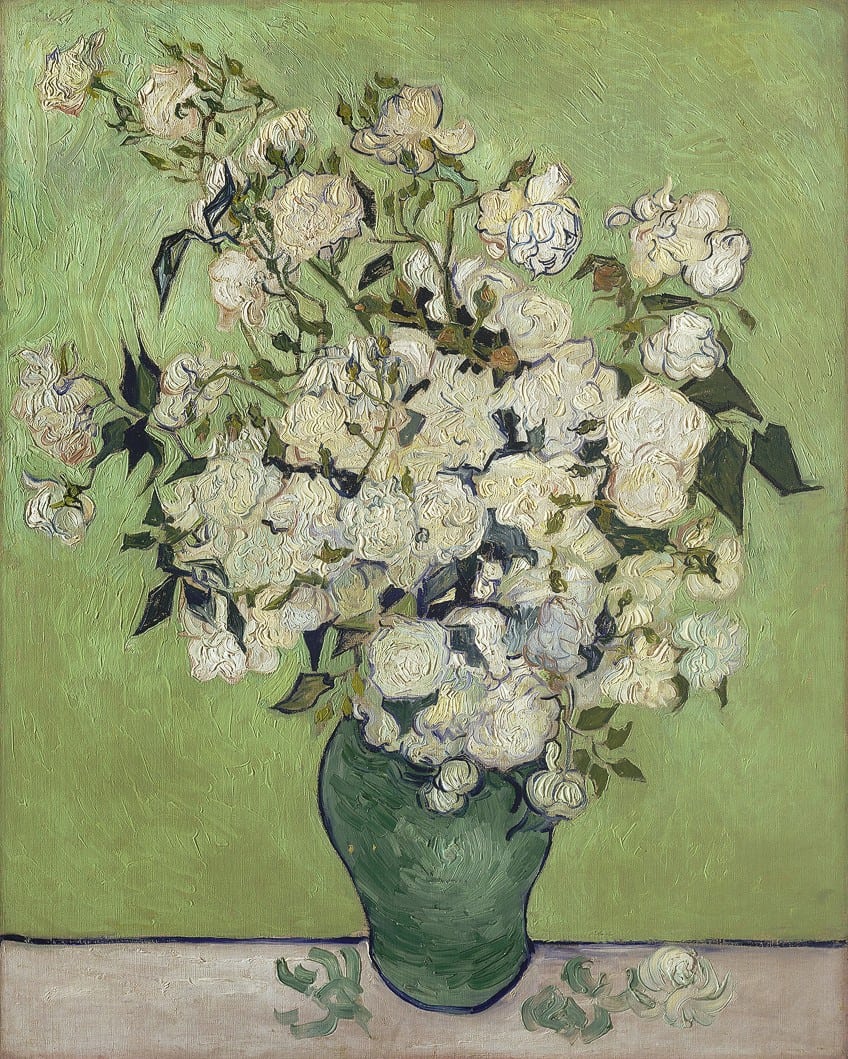
Van Gogh continued to play around with the possibilities of vivid colors and texture in his still-lifes. He infused inanimate objects with spirit and passion by utilizing strong and expressive brushwork. He added a tactile element to his still-life compositions by using impasto and a variety of paint applications, producing a feeling of richness and depth.
The Legacy of Vincent van Gogh
Van Gogh is widely regarded as one of the finest Dutch artists of all time, mostly due to his paintings produced during the last three years of his life. His work had a significant impact on the trajectory of many contemporary painters, particularly the paintings of the Fauve artists and the German Expressionists. Despite this, he only sold one of his more than 800 oil paintings and 700 sketches during his lifetime. Van Gogh’s renown extends back to the early years of the 20th century, and it has only grown since then.
The idea of van Gogh as a struggling artist working undetected alone contributes much to his fame. Self-mutilation, poverty, his mental breakdowns, and suicide are all dramatic components of his life that feed into the public perception of his persona and mythology.
The fact that his unusual talents went unnoticed and shunned by society adds to this mythology, as it is precisely this kind of solitude and suffering that has come to characterize the modern idea of the artist. This mythological Van Gogh has become virtually inseparably connected to his work, prompting artists to dramatize his story in poetry, books, films, and operas.
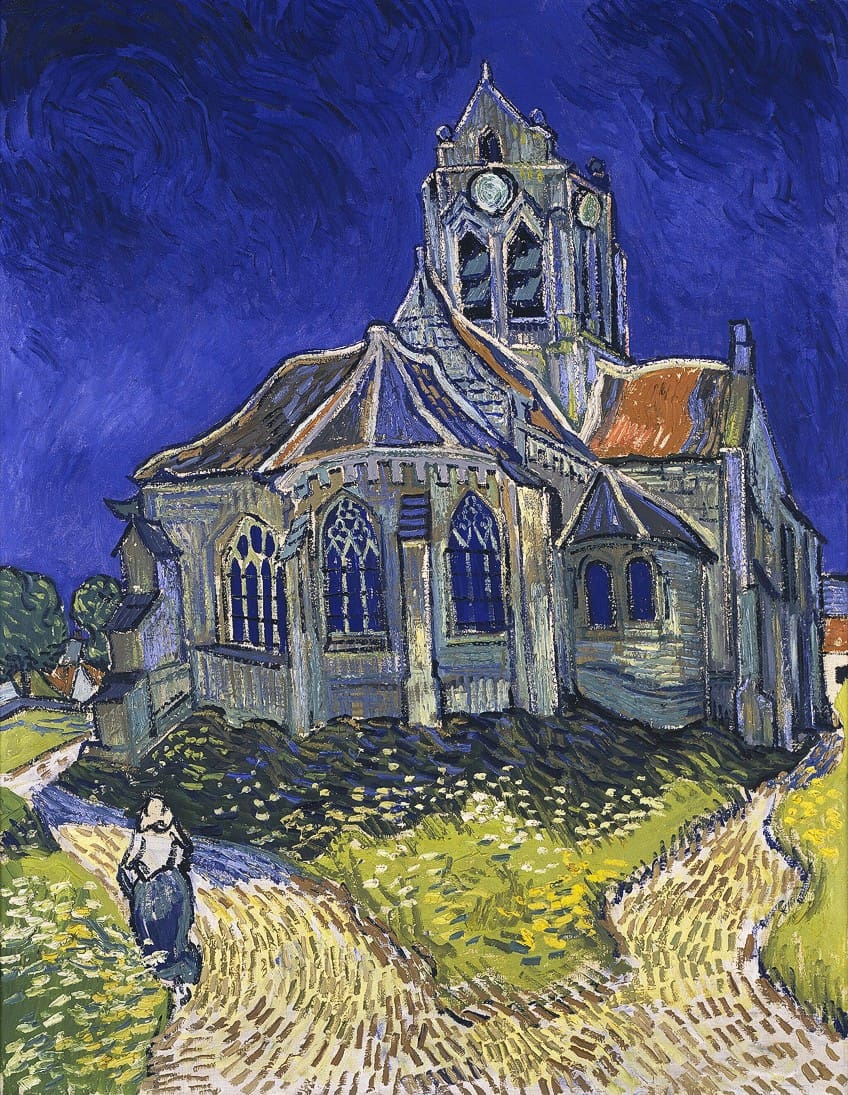
A diverse audience has grown to respect his art, and unprecedented attendance at exhibits of his work, as well as the success of merchandise items featuring pictures from his work, demonstrate that, within a century, he has become possibly the most recognized painter of all time. The exceptional auction prices for his paintings, as well as the attention devoted to counterfeit controversies, have only boosted Van Gogh’s prominence in the eyes of the public.
Scholars have even examined the mythologizing process itself in light of Vincent van Gogh’s ever-increasing appeal. These inquiries provide new insight into the artist and his work while also demonstrating that, more than a century after his death, Van Gogh’s exceptional appeal endures and grows. Van Gogh’s style of painting was barely noticed in his own lifetime, but is now among the most recognizable art styles in the history of art. His expressive brush strokes and use of bold colors combine to create a distinct style that has left a huge impact on artists through the years.
Frequently Asked Questions
What Was Van Gogh’s Style?
Vincent van Gogh’s style of painting is often defined as Post-Impressionism, which was a late-19th-century reaction to Impressionism. While influenced by Impressionism early in his career, Van Gogh created his own distinct and instantly recognizable style that exceeded traditional artistic expectations. Van Gogh’s painting technique was highly emotive and expressive, reflecting his chaotic inner world and desire to portray a deeper and more intimate connection with the subject matter that he depicted. His work has had a profound impact on the world of art and is still admired for its uniqueness, passion, and power.
What Characterizes Van Gogh’s Art Style?
First and foremost, Vincent van Gogh’s art style can be identified by his distinct brush strokes, which are typically bold and expressive. The next obvious aspect of his paintings that help define his works is his use of a vibrant color palette. Van Gogh’s art style is also recognizable by his application of textures in his paintings. Another common feature in his paintings are the distorted and exaggerated forms. He is also renowned for filling his works with symbolism and specifically choosing certain objects for their deeper implied meanings.
Isabella studied at the University of Cape Town in South Africa and graduated with a Bachelor of Arts majoring in English Literature & Language and Psychology. Throughout her undergraduate years, she took Art History as an additional subject and absolutely loved it. Building on from her art history knowledge that began in high school, art has always been a particular area of fascination for her. From learning about artworks previously unknown to her, or sharpening her existing understanding of specific works, the ability to continue learning within this interesting sphere excites her greatly.
Her focal points of interest in art history encompass profiling specific artists and art movements, as it is these areas where she is able to really dig deep into the rich narrative of the art world. Additionally, she particularly enjoys exploring the different artistic styles of the 20th century, as well as the important impact that female artists have had on the development of art history.
Learn more about Isabella Meyer and the Art in Context Team.
Cite this Article
Isabella, Meyer, “Van Gogh Art Style – A Look at His Artistic Expressions.” Art in Context. August 4, 2023. URL: https://artincontext.org/van-gogh-art-style/
Meyer, I. (2023, 4 August). Van Gogh Art Style – A Look at His Artistic Expressions. Art in Context. https://artincontext.org/van-gogh-art-style/
Meyer, Isabella. “Van Gogh Art Style – A Look at His Artistic Expressions.” Art in Context, August 4, 2023. https://artincontext.org/van-gogh-art-style/.







